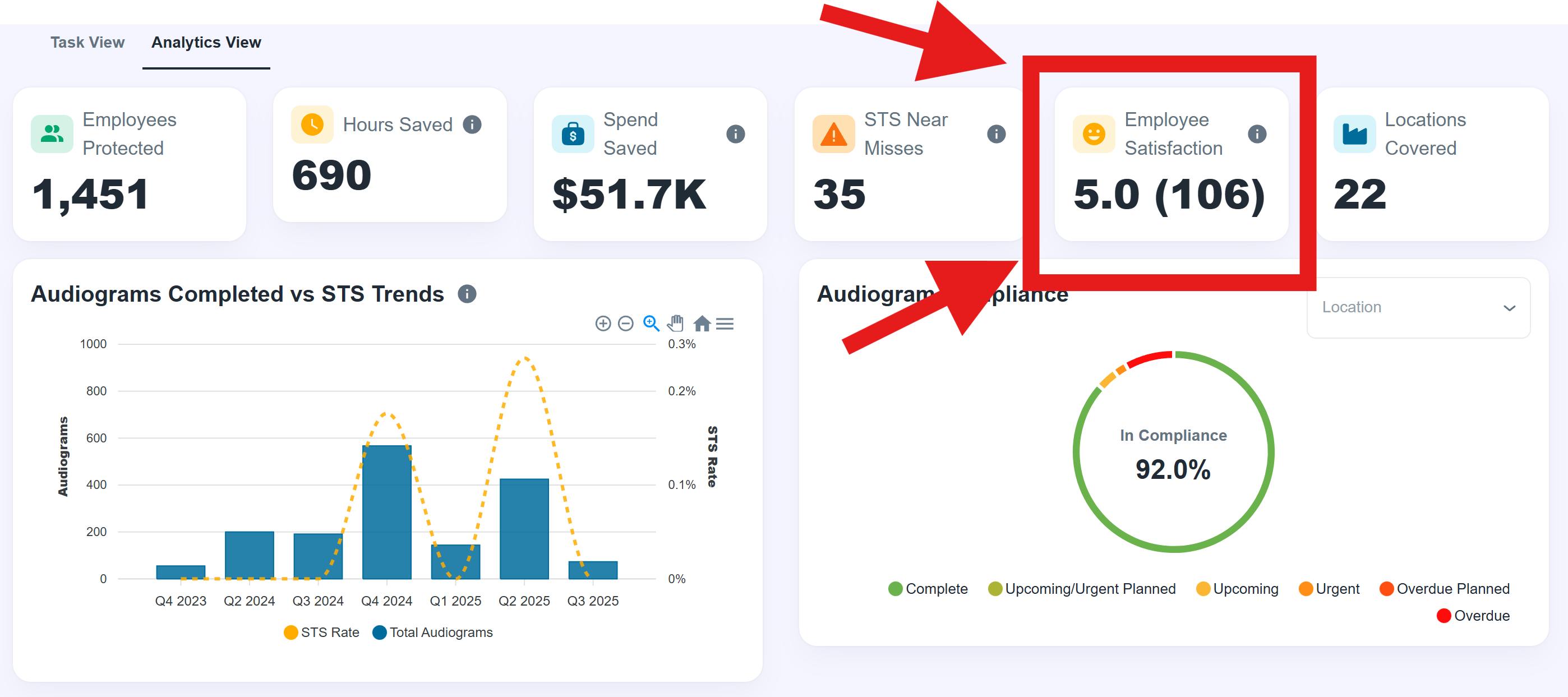Most OSHA hearing conservation programs check the boxes: annual audiograms, required training, and providing hearing protection. The problem is that checking boxes does not prevent hearing loss. Real prevention happens when employees are engaged, when they know their results, when they feel what proper protection is supposed to feel like, and when they help hold each other accountable.
Studies confirm that engagement drives protection:
The conclusion is straightforward. Protection is not only technical. It is behavioral.
Annual audiograms are required, but most employees are told little more than “you passed” or “you failed.” To make results meaningful:
When results are clear and personal, audiograms become a tool for prevention rather than a paper record.
Handing out earplugs does not guarantee safety. Research shows that more than half of employees wear hearing protectors incorrectly without training or verification (3M).
Fit testing solves this by:
Employees often walk away from fit testing saying, “Now I understand what it should feel like.” That confidence is the turning point.
Hearing conservation programs benefit from the same strategies used in other safety areas. Behavior-based safety (BBS) methods bring accountability into the culture of hearing protection.
When employees feel responsible for each other, hearing protection becomes a shared commitment.
Participation can be hard to measure in traditional programs. That is why Soundtrace built a way for EHS teams to capture employee satisfaction immediately after tests and training.

This feature moves programs beyond “did we test everyone” to “do our employees believe they are protected.” That shift makes participation measurable and actionable.
A program that only satisfies OSHA requirements will not stop hearing loss. Employees must:
When those elements come together, hearing conservation becomes part of the workplace culture. That is when prevention becomes real.
Q: Why does employee participation matter more than compliance?
Because behavior, not paperwork, prevents hearing loss. Programs with engaged workers show significantly fewer threshold shifts (NIOSH, 2025).
Q: How can coworkers support each other?
By using behavior-based safety methods. Observing, coaching, and reinforcing correct earplug use builds culture (NHCA).
Q: What does proper fit feel like?
It feels snug and sealed, with noticeable reduction in surrounding noise. If machines still sound loud, the plugs are not protecting enough.
Q: Is annual audiogram testing enough?
No. Annual tests catch changes late. Ongoing feedback, fit testing, and peer accountability are what prevent permanent damage (NIOSH, 2025).
Noise-induced hearing loss is invisible, permanent, and preventable. The best programs do not just hand out earplugs and run annual tests. They educate, engage, and empower employees to take ownership.
When employees understand their results, feel confident in their protection, and look out for each other, the hearing conservation program finally works.
Please fill out the form to the right to request information for audiometric testing. Our team will be in touch and help identify the best plan and pricing for your needs.
.png)

.png)
Join other EHS & Safety teams on simplifying their hearing conservation program.